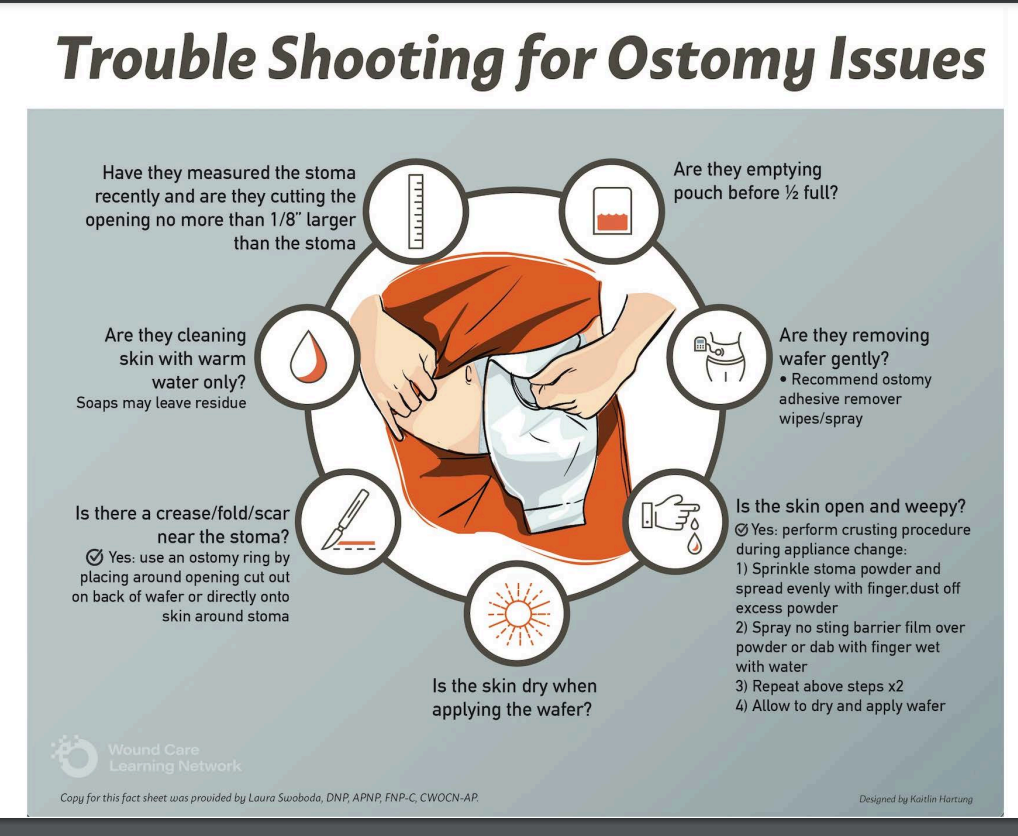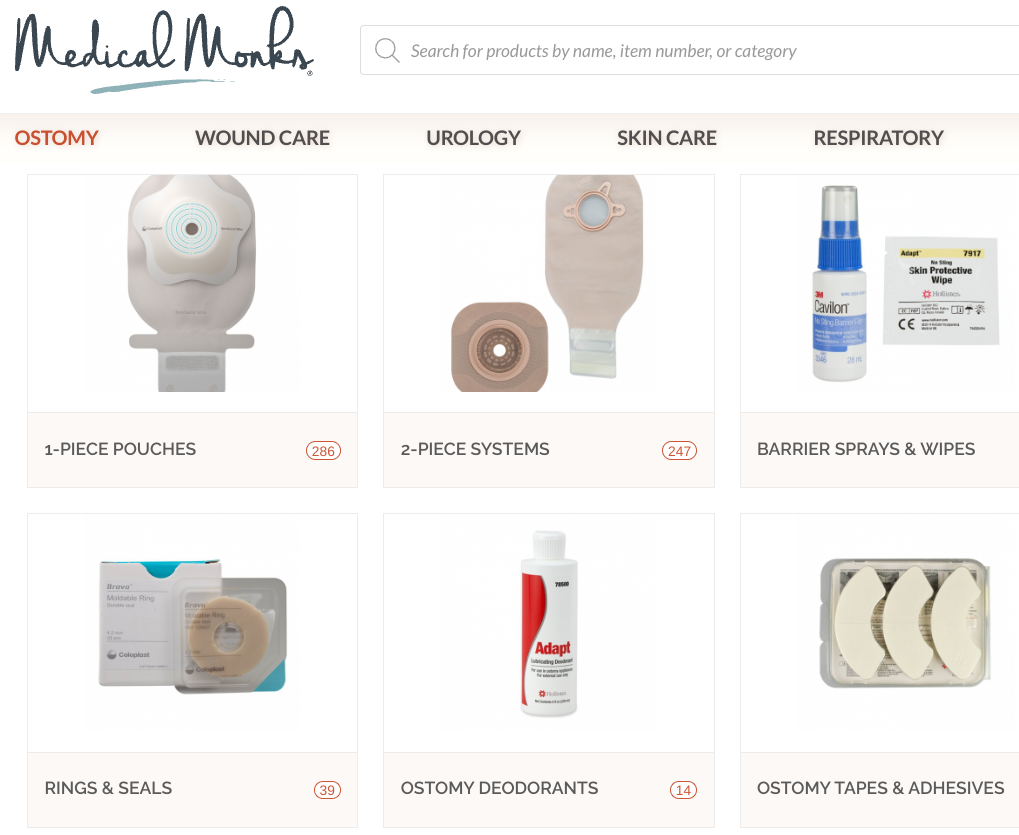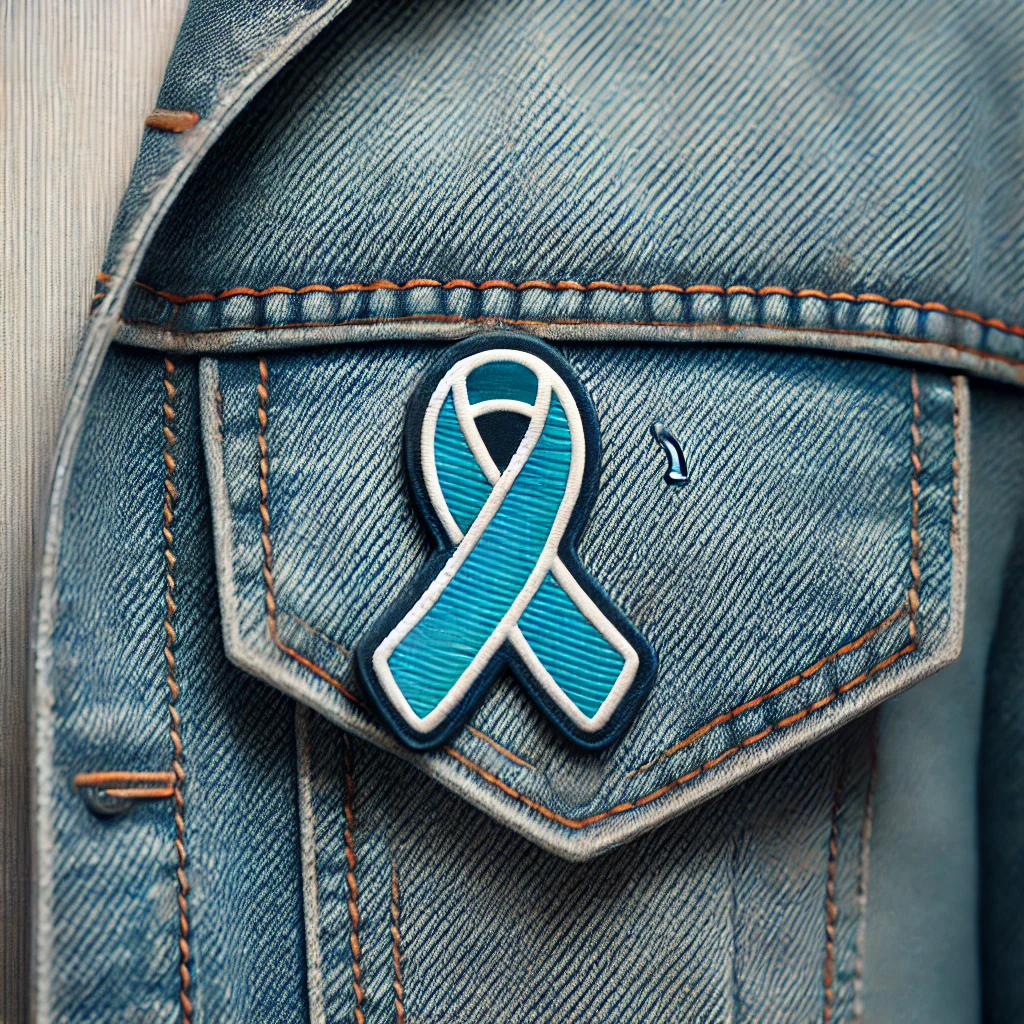Practical Tips for Managing Ostomy Care
Key Takeaways
| Challenge | Solution | Impact |
|---|---|---|
| Difficult stoma placement for wheelchair users | Mark stoma sites while seated | Reduces leaks and skin irritation |
| Dexterity limitations | Pre-cut systems, one-handed applicators | Makes pouch changes easier |
| Lack of emotional support | Empathetic communication, peer mentorship | Builds confidence and reduces isolation |
| Social stigma | Public education, adaptive fashion, workplace accommodations | Normalises ostomy use |
| Daily living barriers | Tech aids, environmental adjustments | Enhances independence |
| Travel challenges | Pre-cut supplies, TSA communication cards, accessible changing kits | Reduces stress and ensures smooth travel |
| Limited accessibility in public spaces | Better toilet access, radar keys, portable disposal bags | Promotes confidence and dignity |
| Discomfort from ostomy appliances | Soft backing materials, ostomy belts, protective covers | Increases comfort and reduces skin irritation |
| Sleeping discomfort | Adjustable beds, zero-gravity positions, ostomy pillows | Improves rest and reduces leakage risk |
| Barriers to exercise and movement | Support garments, sports-specific ostomy belts, hydration strategies | Encourages active living without worry |
Taking care of an ostomy can be harder if you have a disability. When you have mobility issues, hand impairments, or worry about stigma, tasks like changing the pouch, cleaning the skin, and disposal can be a worry.
But by getting the right tools, having clear steps to follow, and keeping a positive attitude, ostomy care can become easier, and more comfortable. It can make you feel totally in control of your situation.
It’s all about finding what works best for you and adapting your environment to support your needs.
Rethinking Accessibility in Ostomy Design
Many ostomy products and care guidelines assume users have full mobility and dexterity. But this isn’t the reality for many disabled people. We need solutions that work for all bodies.

Stoma Measurement: Ensure the stoma is measured regularly and the opening is no more than 1/8″ larger than the stoma.
Pouch Emptying: Empty the pouch before it is half full.
Wafer Removal: Remove the wafer gently and use ostomy adhesive remover wipes or spray.
Skin Cleaning: Use only warm water to clean the skin, as soaps may leave residue.
Skin Condition: If the skin is open and weepy, follow a “crusting” procedure using stoma powder and barrier film in repeated layers before applying the wafer.
Skin Preparation: Ensure the skin is dry before applying the wafer.
Creases or Scars: If there are creases, folds, or scars near the stoma, use an ostomy ring to create a better seal.
The infographic is credited to the Wound Care Learning Network, with copy provided by Laura Swoboda, DNP, APNP, FNP-C, CWOCN-AP, and designed by Kaitlin Hartung.
Stoma Placement and Travel Tips
For wheelchair users, traditional stoma placement can cause complications. A stoma positioned for someone who stands may disappear into skin folds when seated, leading to leaks and discomfort.
Solutions:
- Mark stoma sites while seated to prevent placement in hard-to-reach areas.
- Consider placing it higher on the abdomen for better visibility and easier pouch changes.
- When travelling, always keep ostomy supplies in your carry-on. Pre-cut wafers and emergency kits can be prepared for easy access during travel.
- Consider using a TSA travel communication card to discreetly inform security about your medical condition
These tips are from a Reddit thread about travelling with a stoma bag.
Adapting Ostomy Products for Different Abilities
Dexterity limitations, arthritis, or muscle weakness can make pouch changes frustrating.
- Pre-cut systems reduce the need for fine motor control.
- One-handed pouch applicators allow independent care for those with limited grip.
- Convex barriers help people with a higher BMI manage adhesion issues.
- Leg bags for urostomies give more flexibility for drainage without lifting or bending.
For a wide range of products tailored to various needs, explore ostomy appliances that provide reliable solutions for managing leaks, skin protection, and ease of use.

Other tips from Ostomates:
- Experiment with different brands and types of ostomy supplies—many companies offer free samples to help find the best fit.
- Use a two-piece system for easier management of gas and to prevent leaks.
- Pre-cut systems and one-handed applicators significantly ease pouch changes for those with dexterity issues.
- Convex barriers are beneficial for individuals with a higher BMI to manage adhesion issues.
Emotional and Social Support
- Joining support groups can help in reframing the disability as a difference, not a limitation, and provides a platform for sharing practical tips.
- Public education initiatives, such as “ostomy days” in schools, can normalize ostomy use and reduce stigma.
- Adaptive fashion with hidden access panels can make daily life more comfortable and less stigmatizing.
Daily Living Adjustments
- Wall-mounted disposal bins for easy reach, adhesive pre-cutters for dexterity challenges, and mirrors positioned to improve stoma visibility can make daily care easier.
- For those with mobility issues: Consider using a handheld bidet sprayer and an inexpensive shower chair to make bag emptying easier.
- An adjustable bed base with a “zero gravity” setting can make sleeping more comfortable.
Additional Tips
- Keep a towel close by for leaks, providing extra security and confidence.
- For pet owners: Sleeping on your back with a pillow over your ostomy can prevent pets from disturbing the stoma.
- Use baby wipes for easier cleanup.
- Consider an ostomy pillow for seat belts to enhance comfort while travelling.
Bridging the Empathy Gap in Healthcare
Understanding Emotional and Social Barriers in Ostomy Care
Healthcare workers often focus on the body. They may forget about feelings and emotions. But having an ostomy can affect a person’s mind and heart too.
Why Emotions Matter
- People with an ostomy may feel sad, angry, or embarrassed.
- They may worry about how others see them.
- They may feel alone if they do not have support.
How to Help
- Give clear and simple advice. Use the same words every time.
- Listen to feelings. Ask, “How do you feel?” actively listen to the answer.
Empathetic care matters.
- Use simple language and visual aids to ensure clear communication.
- Acknowledge personal struggles, such as employment barriers or difficulty accessing public toilets.
- Ask what activities matter most to the person, so care can be adapted to their lifestyle.
Building a Toolkit for Independence
Education makes a difference. A study found that caregivers trained in ostomy care lowered complications, shortened hospital stays by two days, and reduced the need for home care and extra surgeon visits by 10%.
Simple Strategies for Daily Ostomy Management
- Micro-learning: Such as short pouch-change tutorials while listening to music.
- Peer mentorship: Video calls with other ostomates for tips on independence.
- Environmental hacks (as previously mentioned in the user tips above):
- Wall-mounted disposal bins for easy reach.
- Adhesive pre-cutters for those with dexterity challenges.
- Mirrors positioned to improve stoma visibility.
Think about your hobbies and pursuits and how you can adapt them
Here are some gardening tips for ostomates, as an example of the ways you can adapt and manage hobbies:
Tips for Gardening with a Stoma
| Tip | Description | Benefits |
|---|---|---|
| Utilise Raised Flowerbeds | Elevate your planting areas to reduce the need for bending and straining. | Minimises pressure on the stoma and abdominal muscles, making gardening more accessible. |
| Employ Ergonomic Gardening Tools | Use tools designed to lessen physical effort, such as long-handled trowels and forks. | Reduces the need for bending and stretching, protecting the stoma area. |
| Incorporate Supportive Accessories | Wear a support garment or belt to provide additional abdominal support during activities. | Helps prevent hernias and offers extra protection to the stoma. |
| Practice Safe Lifting Techniques | Always bend at the knees, not the waist, when lifting objects like pots or watering cans. | Prevents undue strain on the abdominal area, safeguarding the stoma. |
| Design a Low-Maintenance Garden Layout | Opt for container-grown plants and use mulch to reduce weeding. | Decreases physical exertion, allowing for enjoyable gardening without overexertion. |
Breaking Social Barriers Beyond the Bathroom
Disability stigma makes ostomy care harder than it needs to be. But changing public attitudes can help.
Normalising Ostomy Use
- Schools hosting “ostomy days” with age-appropriate puppet shows.
- Employers offering private changing spaces, so ostomates don’t have to use public restrooms.
- Fashion brands designing ostomy-friendly clothing with hidden access panels.
Support groups play a huge role in reframing disability as difference, not a limitation.
Small Changes, Big Difference
Being independent doesn’t always mean making big changes. Sometimes, small steps can have the biggest impact.
How Small Changes Help
- A simple tool can make daily tasks easier.
- Clear instructions can boost confidence.
- A small change in routine can reduce stress.
Examples of Small but Powerful Tweaks
- Using a different type of bag that feels more comfortable.
- Placing supplies in an easy-to-reach spot.
- Practising with a nurse until it feels natural.
- Discreet or coded voice-activated reminders for pouch checks.
- Applying barrier rings while listening to favourite music or a podcast to make it feel more routine.
Final Thoughts: More Than Just Products
Ostomy care is not just about medical supplies. It is about making life easier for disabled people. This means:
Better tools – Easy-to-use bags and supplies.
Kind and patient caregivers – Training in empathy and clear communication.
Changing attitudes – Helping others understand and accept ostomies.
Focus on Abilities, Not Limits
Instead of thinking about what someone can’t do, we should:
Remove barriers that make daily life harder.
Offer support that builds confidence.
Create a world where everyone feels included.
Useful Links & Resources for Ostomates
UK Support Resources
- Colostomy UK – Provides support, reassurance, and practical advice for people with a colostomy.
- IA – Ileostomy & Internal Pouch Support Group – Specialises in support for those with an ileostomy or internal pouch.
- Urostomy Association – Offers guidance for individuals with a urostomy.
- Crohn’s & Colitis UK – Provides resources for those with IBD, which can lead to ostomy surgery.
- Beating Bowel Cancer – Supports individuals with bowel cancer, often involving ostomy surgery.
- #GetYourBellyOut – Social campaign and community support for younger ostomates.
- Breakaway Foundation – Support group for young ostomates and their carers.
- Fight Bladder Cancer – Provides support for individuals with bladder cancer, which may involve ostomy surgery.
USA and Global Support Resources
- United Ostomy Associations of America (UOAA) – Support, advocacy, and a group finder tool for ostomates.
- Wound, Ostomy, and Continence Nurses Society (WOCN) – Helps patients find specialist nurses and ostomy care information.
- International Ostomy Association (IOA) – Advocates for ostomates’ rights worldwide.
- Global Tracheostomy Collaborative – Resources and forums for tracheostomy and ostomy patients.
- Friends of Ostomates Worldwide (FOWUSA) – Provides ostomy supplies and education to those in need.
- Ostomy 101 – Comprehensive online resources for ostomy care.
- Meet an Ostomate – Online forums and peer support network.
- Girls with Guts – Community for women with ostomies and IBD.
- Vegan Ostomy – Guidance for plant-based living with an ostomy.
These trusted resources offer practical support, information, and community connections for ostomates in the UK and USA.
FAQ
What is the difference between a stoma and an ostomy?
A stoma and an ostomy are related terms often used interchangeably, but they refer to different aspects of the same surgical procedure:
Stoma: A stoma is the physical opening on the surface of the abdomen that is created during surgery. It connects the bowel or urinary system to the outside of the body, allowing waste (faeces or urine) to be diverted out. The stoma itself is a small, pinkish, circular piece of flesh that is sewn to the body, and it has no nerve endings, so it does not cause pain.
Ostomy: An ostomy is the surgical procedure that creates the stoma. It is the operation that changes the way intestinal contents or urine leave the body by bringing part of the bowel or urinary system through the abdominal wall. The term “ostomy” can also refer to the stoma itself, but more broadly, it encompasses the entire process and the resulting stoma.
In summary, while a stoma is the physical opening, an ostomy is the surgical procedure that creates this opening. The terms are often used interchangeably, but technically, an ostomy is the surgery, and the stoma is the result of that surgery

